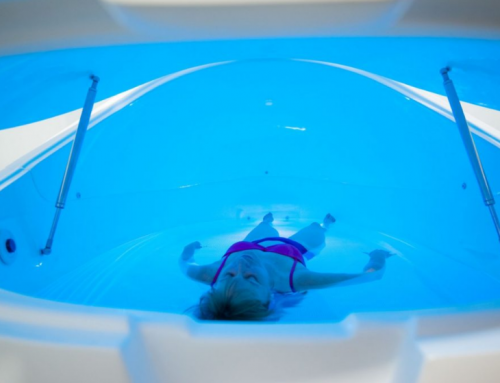Arthritis comes in all shapes and sizes. Whether felt in a big toe, shoulder, low back or all over, it can affect your activities, your mood, and even your sleep. There is a reason for the old adage, “if you don’t use it, you lose it”. The stiffness or lack of mobility often associated with arthritis can fuel a frustrating and disabling cycle. While medications may offer symptomatic relief, they don’t solve the problem. Floating or float therapy is emerging as a safe and effective way to manage arthritis, both by itself and in tandem with other therapies.
Arthritis by definition, affects the specific joints associated with and influenced by chronic inflammation both locally and systemically. Each joint is specialized in its shape and structure to control the range of motion between the parts it connects, such as the knee, shoulder or spinal vertebrae. Due to age, hereditary factors, injury, chronic poor posture, repetitive stress, poor diet, lack of movement, joints can easily degenerate. Whether you have degenerative, inflammatory, or autoimmune arthritis, they are all affected by how you manage your immune system, your sleep, your stress response, and your level of activity. Float therapy, especially due to the Epsom Salt in the water, help to address all of these areas.
While floating effortlessly in pool of water saturated with 500+ kilograms of Epsom Salt or magnesium sulphate, maintained at skin temperature (35-35.5 degrees C) water, your body enters a deeply relaxing state to quickly allow the brain to enter a state of rest and repair. Magnesium is an essential for joint repair and acts as a natural anti-inflammatory. Skin absorption of magnesium, through floating, is one way magnesium can be delivered to the body to help its muscles relax. Due to inefficiencies in our digestive system, it is helpful to gain magnesium stores in ways that bypass the digestive tract, such as skin absorption. Magnesium is also critical for calcium absorption and unlike calcium, we do not store magnesium in our body for very long.
Sulphur, also absorbed through the skin while floating, helps with detoxification, pain and the building blocks of joint cartilage. It can also be found in many joint care supplements like MSM (the S is for the Sulphur part), glucosamine and chondroitin sulphate. This is just another benefit that floating may help with those suffering from all forms of arthritis.
Your brain is affected on many levels when entering a state of deep relaxation during a float. One way it does this is in signalling a master switch in the brain called the hypothalamus. This directs the pituitary gland to slow down the constant output of adrenaline and cortisol by the adrenal gland, thereby boosting the immune system and signalling other mood enhancing endorphins and hormones, such as serotonin and dopamine.
Floating improves your quality of sleep. The deep relaxation of floating often mimics stages of sleep and their related brainwaves like Theta and Delta. You can actually fall asleep while floating, finding yourself anywhere from stage 1 to stage 4 (REM) sleep. Sleep is incredibly helpful for rest and repair of the body’s processes and is systemically anti-inflammatory. The effects on sleep, as well as the other benefits extend far beyond the time in the float tank.
Recent studies on chronic pain and floating have shown it to help with less intense and frequent pain and improve mobility. This enables activity which positively impacts your mood, mobility and more.
Floatation therapy is a safe, effective, and accessible method to positively address the impact and progression of arthritis.
To learn about our chronic pain and floating case studies, visit our BENEFITS page for more information on floating and chronic pain.
Original article courtesy of MyFloatZone.com
Related Tag: Float Therapy Perth





